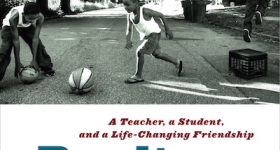I love the swing dance subculture like my brother loves videogames—obsessively and all at
once. Lindy hop in particular, invented in Harlem by the late and great Frankie
Manning, runs in my blood. Everything, from the twang of the bass to the taps
on the high hat and the crooning trumpet, enthralls me. It’s not just the
music, though the rhythm is king. Something about having an amazing dance with
a complete stranger makes you fast friends. Swing dancers share a special bond
gained from the mutual appreciation of jazz music.
Despite my devotion to the dance
scene, I do find myself in some awkward conversations due to my race.
American-born Chinese, I’ve lived everywhere from Northwest Arkansas to
Maryland and Chicago. Recently, I volunteered at the global and fantastic
Frankie Manning Centennial in New York City. I felt starstruck checking in
famous names from across the globe and helping out backstage with the run of
things. However, the event revealed the striking lack of
diversity within the U.S. dance scene compared to the global one. Because of
Frankie 100, I saw the contrast between other country’s vibrant dance scenes
and our own.
The lindy hop community in the
States now is made up of mostly white people with some minorities. Old photographs
prove that jazz inspired people of all backgrounds. While the Harlem community
boasted some of the first integrated dance floors in America back in the 1920’s
and 30’s, the swing dance scene now definitely feels a bit whitewashed. With
the exception of vibrant overseas dance communities in China and South Korea,
Asian Americans like myself are a definite minority in the U.S. Because of
small numbers, this might be why most dancers assume we’re from “out of town.”
It does a lot to make a girl feel homeland insecure.
Another major obstacle is finding
dance partners. Though most follows have difficulty finding leads these days (mostly
because the culture of asking is not restricted to gender), add the
complication of race, and people who look like me usually get the short end of
the stick. I partly attribute this to nostalgia for the past. Desire for the
vintage elegance of movie stars and classic beauty undermines the recent
globalization of beauty. Mainstream media focused mainly on white movie stars
with few people from other races. Bombshells of early Americana included
Veronica Lake and Marilyn Monroe. Very beautiful, very western and white women.
Shanghai was a veritable hub of the jazz movement with a Jazz Revival in the
40s, which combined eastern and western music into an amazing fusion genre. However,
this cultural mix would never have been noticed in Hollywood, the time of
Charlie Chan and yellow peril. TV wanted Asian people in flat, one-dimensional
roles. Since lindy hop hearkens back to such a time, perhaps the stereotypes slip
into our minds as well. You just couldn’t see us. While white people dominated
the screen, the rest of us were working backstage or watching in the wings.
I’ve also felt alienated based on
clothing choices. While abroad, I bought a short cheongsam to wear on formal
occasions. When I’ve wore the traditional-style Chinese dress to a dance,
people respond differently. At one point, a guy adamantly wanted to take my
picture because of my outfit. Given that he was wearing an army uniform, I
refused. I really didn’t want to look like a Madama Butterfly or Miss Saigon
rendition next to his clear display of American patriotism. At another point, I
wore my cheongsam the same night two other girls did. While one received the “Best
Dressed” award at the event and the other never left the dance floor, I felt
pushed to the sidelines. I’m not sure if they just assumed I was foreign and
couldn’t dance to the western jazz, but I left frustrated. What kind of double
standard was this? If a white girl wore a cheongsam, it was vintage chic. If I
wore it, it branded me as perpetually foreign and further unapproachable. Somehow,
it was okay to wear a dress like a costume, to appear more “exotic,” but
wearing it seriously meant racial discrimination.
I love lindy hop. I especially love
the community. Many of my friends are from different states, countries and
cultures. Many of the ones who misjudged me or my race learned to apologize and
accept me. But people have yet to think beyond rigid, “vintage” images. Jazz is
for everyone, not just for the history books. To truly nurture every dancer, we
need to accept people for their culture and not alienate them for it. It’s time
to saturate the dance world with color and get rid of the white wash. Dancers
need to overcome the stereotypes of Old Hollywood, not repeat them. Time to
stop watching movies and start making a move.









Comments